If you’re new to the photography game, never fear! We have rounded up the 5 best DSLRs to buy for beginners.
Bad news for would-be photographers: the phone sucks at taking pictures. That’s saying something because modern mobile phones take better pictures than ever before.
Still, suppose you’re creatively minded or want to push your photography to new extremes. In that case, you’re going to hit the greatest headroom on a smartphone a long time before you will on a DSLR.
Good news, would-be photographers! The DSLR market has indeed come of age. That means whether you’re a jobbing professional or an aspirational newcomer, there’s a DSLR for you out there.
The benefits of DSLRs are everywhere
- Bigger image sensors mean better-quality images, particularly when the light begins to drop.
- A full range of manual controls. Daunting at first allows you to take ownership of aspects of your image that you were previously leaving in the hands of chance.
- An interchangeable lens camera allows you to swap the optic on the front of the camera. This is allowing you to use everything from ultra-wide-angle lenses to mega-long telephoto lenses. Get the right lenses, and you’re equipped to shoot everything from dramatic mountain ranges to the high-octane sport.
The best entry-level DSLRs to buy
1. Canon EOS 2000D: The best all-round cheap DSLR
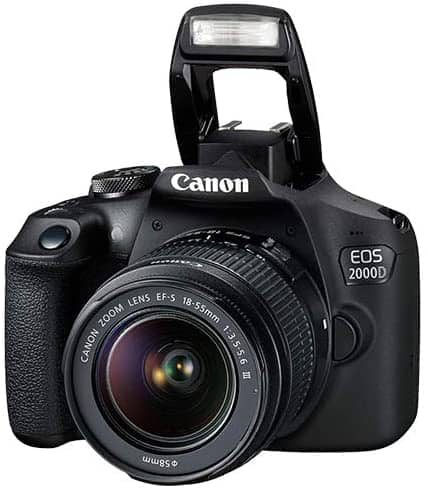
Canon’s latest in its budget range of X000D cameras, the 2000D, offers an awe-inspiring amount in return for just under 500 notes. You get Wi-Fi, which can allow you a massive range of untethered possibilities in conjunction with Canon’s Camera Connect App.
You also get an effective 24.1-megapixel sensor and compatibility with Canon’s absolutely vast EF and EF-S lenses range. It’s also compatible with third-party lenses from Sigma and Tamron.
For a camera of this price, the compromises are few and far between, which is impressive. The screen fixed on the back has a high 920k pixel resolution.

Although the maximum ISO of 12,800 isn’t record-breaking, it will cover you for almost all types of photography. Film-makers might be wary of the lack of a microphone jack. Those with an eye on sports should beware of the maximum continuous shooting speed of just 3fps.
Otherwise, this has the makings of a superb first camera. We would argue that more ambitious photographers will find the extra $250 for the Canon 800D money well spent.
More: The Best Camera Tripods
Key specs
- 24.1 megapixel sensor
- 9-point, 1x cross-type (centre) autofocus
- Video modes: 480p at 30, 25fps. 720p at 60, 50fps. 1080p at 30, 25, 24fps
- Shutter speed range: 30s-1/4,000th
- Max continuous speed: 3fps, 150 JPG, 11x RAW
- ISO range: 100-12,800
- Memory card slot: SD, SDHC, SDXC
- Lens mount: EF / EF-S
- Display: 3in, 920k-pixel
- Connectivity: Hi-Speed USB, HDMI mini, Wi-Fi, NFC
- Battery life: 500 frames
- Dimensions: 101 x 78 x 129mm (WDH)
- Weight: 0.9 pounds without lens.
2. Canon EOS 4000D: The best DSLR under $500

Just how cheaply can you make a DSLR? We’d say that a bit over $450 is going some. The Canon EOS 4000D actually represents a good buy for pro photographers looking for a camera to use in high-danger environments. Despite its bargain price, the EOS 4000D still rocks Wi-Fi.
It doesn’t rock much else, mind. Though that’s still more than enough for most purposes, its megapixel count of 18 is the lowest here.
Its screen not only is it small, at 2.7in, but it’s fixed and has a low 230k pixel resolution betraying its price. Fix the lens to the camera, and you’ll notice that the lens mount is made from plastic rather than the metal used in every other Canon EOS body.
It feels, if not flimsy, then lightweight. The 3fps maximum continuous speed isn’t a barrel of laughs, either. Those who want to shoot RAW images should beware of the tiny image buffer of just six RAW files before the EOS 4000D needs to stop for a breather.

Yet get past all that, and there’s a lot to like. Image quality is everything you’d expect from an APS-C model straight from the camera. The 4000D still shoots 1080p video at very decent quality, albeit without an external microphone option.
We also love its weight at under 1lbs before you attach a lens. This a camera that doesn’t make itself known on the shoulder.
More: The Best SD Memory Cards
Canon EOS 4000D Unboxing
Key specs
- 18 megapixel sensor
- 9-point, 1x cross-type (centre) autofocus
- Video modes: 480p at 30, 25fps; 720p at 60, 50fps; 1080p at 30, 25, 24fps
- Shutter speed range: 30s-1/4,000th
- Max continuous speed: 3fps, unlimited JPG, 6x RAW
- ISO range: 100-12,800
- Memory card slot: SD, SDHC, SDXC
- Lens mount: EF / EF-S
- Display: 2.7in, 230k-pixel
- Connectivity: Hi-Speed USB, HDMI mini, Wi-Fi
- Battery life: 500 frames
- Dimensions: 102 x 77 x 129mm (WDH)
- Weight: 1.1 pounds without lens.
- DSLR quality photos & full HD movies; Powerful 18 Megapixel sensor; 3.0 frames per second
- Canon Camera Connect App: share instantly & shoot remotely via compatible smartphone; Scene Intelligent Auto: simply frame & shoot for great results
- Guided live view with creative auto mode; Creative Filter: add unique finishes
- Precise auto focus; Easily frame your shots with the optical viewfinder
- Bundle Includes: 1x Canon Lithium-Ion LP-EN10 Battery, Canon LC-EN10 Charger, Canon Eye Cup, Canon EW-400D Neck Strap, Canon Lens Cap, Canon Body Cap, SanDisk Ultra 64GB 100MB/s Class 10 SDXC Memory Card, Camera Backpack, 58mm UV (Ultra Violet) Filter , 58mm Tulip Lens Hood, 50 inch Professional Tripod, Highspeed Memory Card Reader, 3-Fold Memory Card Wallet, Lens Cleaning Pen, Dust Blower, Lens Cap Keeper, and Microfiber Cleaning Cloth
3. Canon EOS 800D: High-end features and cracking image quality
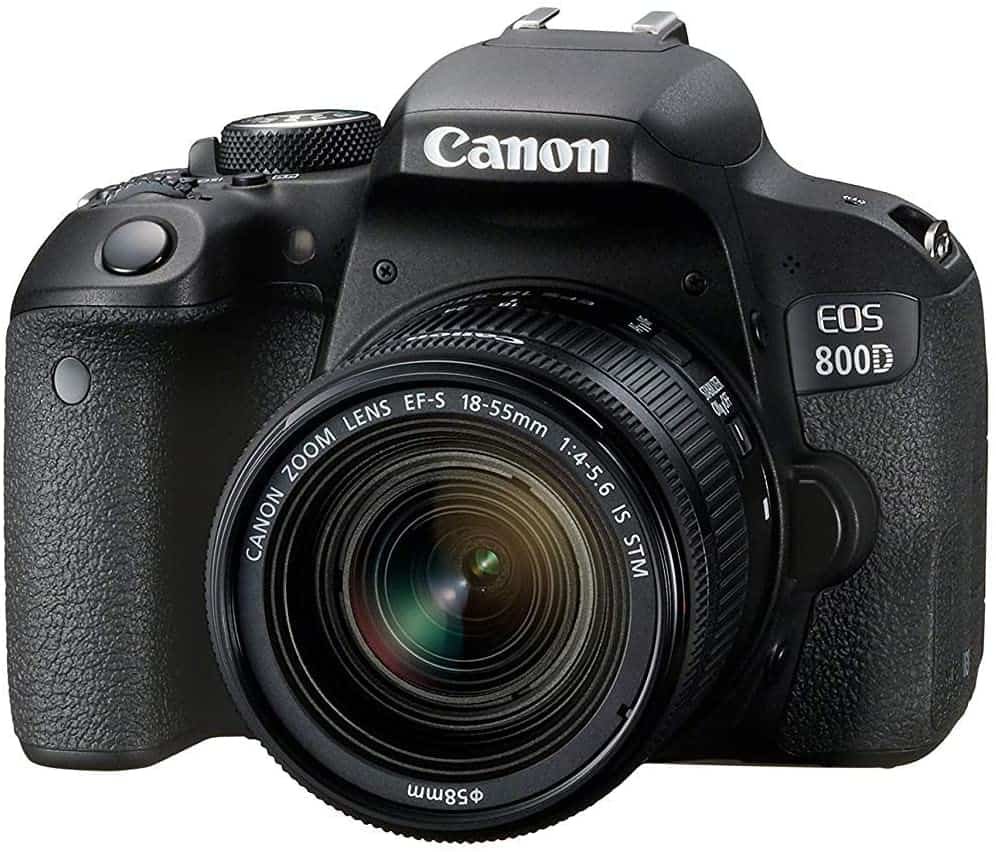
Price-wise, the Canon EOS 800D sits at the very top of what we’d consider an entry-level DSLR, but photographers who want a body that will last.
At the same time, they grow their photographic skills will be well rewarded. The 800D’s body might be almost exclusively made of plastic (except for the decent-quality, metal lens mount). Still, in many other ways, it comes close to treading on the toes of Canon’s higher-end snappers.
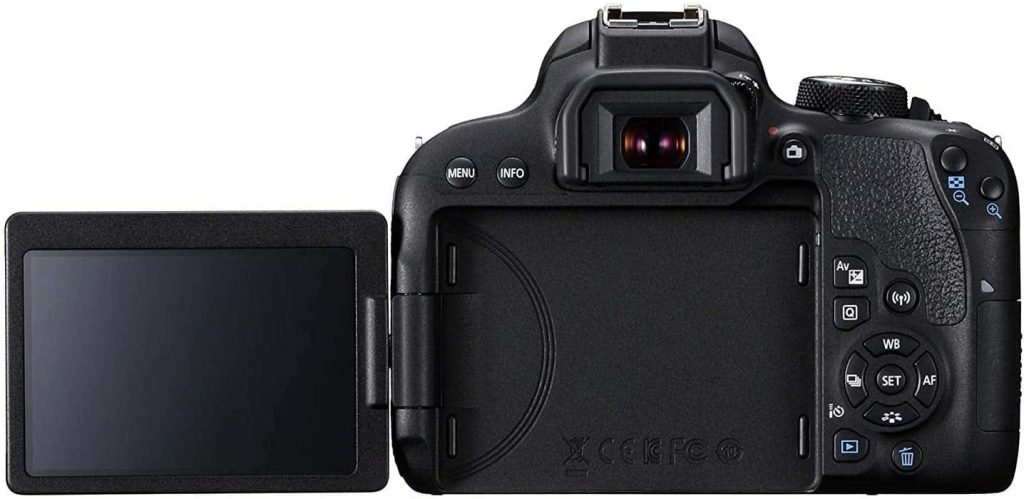
For example, you get 45 cross-type autofocus sensors. This will give you plenty of compositional flexibility and good low-light performance. It also shoots 1080p video at up to 60fps and offers a 3.5mm microphone jack. The screen on the back is a 3in vari-angle number.
At the same time, those with a penchant for shooting moving subjects will appreciate its 6fps maximum frame-rate. It can shoot up to 27 frames at that speed with the camera set to the RAW mode or JPGs up to the limit of your memory card.
The image quality is excellent. It should be noted that the 800D allows you to shoot around 100 frames more per battery charge than either of Canon’s lesser models. If you’re looking to buy your first DSLR and don’t mind spending a little more for a model with lots of headroom, the 800D should see you a long way down the road.
More: The Best Outdoor Projectors
Canon EOS 800D Unboxing
Key specs
- 24.2 megapixel sensor
- 45x cross-type autofocus
- Video modes: 480p at 29.97, 25fps – 720p at 59.94, 50, 29.97, 25fps – 1080p at 59.94, 50, 29.97, 25, 23.98fps
- Shutter speed range: 30s-1/4,000th
- Max continuous speed: 6fps, unlimited JPG, 27x RAW
- ISO range: 100-51,200
- Memory card slot: SD, SDHC, SDXC
- Lens mount: EF / EF-S
- Display: 3in, 1,040k-pixel vari-angle
- Connectivity: Hi-Speed USB, HDMI Mini, 3.5mm stereo mini-jack for microphone, Wi-Fi, NFC, Bluetooth
- Battery life: 600 frames
- Dimensions: 131 x 76 x 100mm (WDH)
- Weight: 1.17 pounds without lens.
- Canon EOS 800D DSLR Camera (Import Model): 24.2MP APS-C CMOS Sensor - DIGIC 7 Image Processor - 3.0 inch 1.04m-Dot Vari-Angle Touchscreen - Full HD 1080p Video Recording at 60 fps
- Canon EF-S 18-55mm f/4-5.6 IS STM Lens: EF-S Mount Lens/APS-C Format - 28.8-88mm (35mm Equivalent) - Aperture Range: f/4 to f/32 - One Aspherical Element - Super Spectra coating - Optical Image Stabilizer - STM stepping AF motor - Rounded seven-blade diaphragm
- Canon Accessories: Canon LP-E17 Battery, Canon LC-E17 Charger, Canon neck strap, Eye cup, Body Cap, Lens Caps
- Bundled Accessories: Movavi Photo-Video-Manager-Focus-Denoise 5-Software Package, Sandisk Ultra 64GB SDXC High Speed Memory Card, Shotgun Microphone, LED Video Light, U Stabilization Grip, Filter kit with UV, CPL, FLD Filters, Tulip Lens Hood, Memory Card Reader, Lens Cap Keeper, Shoulder Case, Tripod, Extra Replacement Battery, Travel Charger
- Included memory card size: 64.0 GB
4. Nikon D5500: The best cheap DSLR for traveling
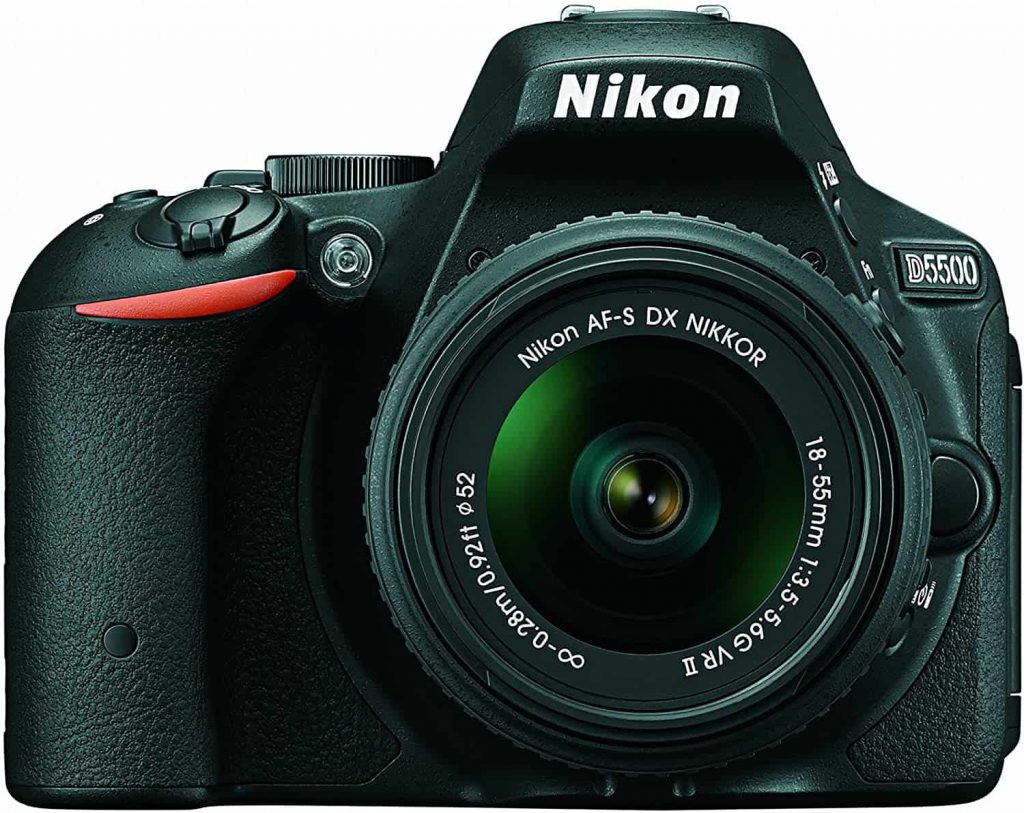
Nikon hopes that D5500 is the camera that will lure photographers away from the current crop of superb, small, lightweight mirrorless cameras. Compared to its predecessor, the D5300, it’s lighter and a bit smaller. It offers 300 shots more per battery charge, giving beginner photographers a very impressive 1,500 shots per charge.
Everything else stays as it is. The 24.2-megapixel sensor is the same, as is the lightweight 39-point autofocus system. That’s not a huge cause for complaint. The D5300 took excellent images. So does this, with noise very well controlled up to ISO 25600 and good results on offer even beyond that. It’s a good performer, too, shooting 5fps for 15 images in JPEG mode.

Its video mode produces great-looking movies. However, they don’t sound quite as good, thanks to the lack of a mic-in socket.
It’s frustrating that if you choose to set a manual exposure for your videos, you can’t adjust the aperture in live-view mode, which is a weird little quirk.
We like just about everything else. Though small and a touch “clicky”, the buttons are easy enough to hit, and the single-exposure dial feels positive.
The menu system, including its excellent Guide mode, speaks to Nikon’s prowess with digital photography. This makes the D5500 a superb option for those who want to get into DSLR photography but find it a somewhat daunting prospect.
The display is a 3.2in, 1.2M-pixel panel is a good one. It doesn’t tilt and isn’t a touchscreen. Connectivity comes via the usual wired suspects (including micro-USB) and Bluetooth 4.1. Which can be used to transfer images (albeit slowly) and trigger the camera remotely. It’s not quite as fast or refined a system as Wi-Fi cameras we’ve seen, but it’s a start.
Excellent image quality, a vast lens library, and absolutely stonking battery life make the D5500 a very affordable option as a first DSLR.
More: The Best Digital Photo Frames
Key specs
- 24.2 megapixel sensor
- 39-point, 1x cross-type (centre) autofocus
- Video modes: 720p at 59.94, 50fps; 1080p at 59.94, 50, 29.97, 25, 23.976fps
- Shutter speed range: 1/4000 sec
- Max continuous speed: 5fps
- ISO range: 100-25,600
- Memory card slot: SD, SDHC, SDXC
- Lens mount: Nikon F mount
- Display: 3.2in, 1.2M-pixel
- Connectivity: Hi-Speed micro-USB, HDMI mini, Bluetooth
- Battery life: 820 frames
- Dimensions: 124 x 97 x 70mm (WDH)
- Weight: 0.9 pounds without lens.
- 24.2 MP DX-format CMOS sensor with no optical low-pass filter (OLPF)
- 39-point Autofocus (AF) system
- 5 frames per second continuous shooting
- ISO 100 - 25,600
- High resolution, vari-angle LCD with familiar, smartphone-like touchscreen for easy use
5. Nikon D5600: Luxury features and improved autofocus make for a great all-rounder
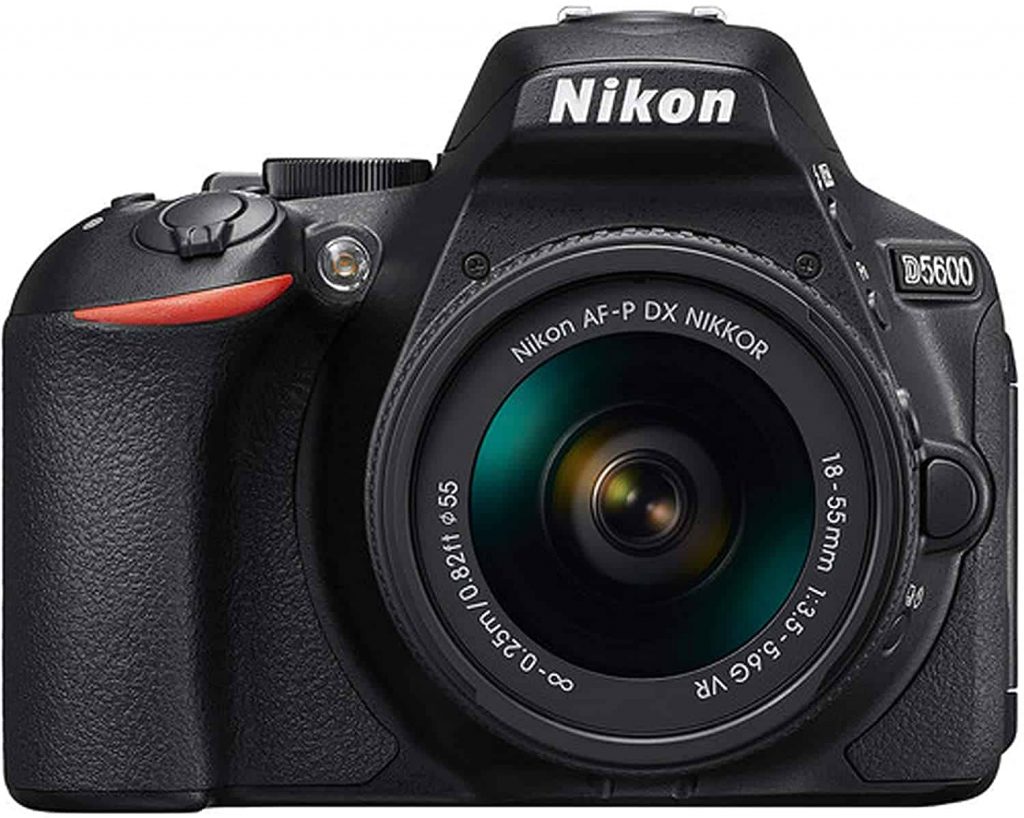
Like its rival, the Canon EOS 800D, the Nikon D5600 is geared towards the top end of mass-market, affordable DSLRs. Yet, like the Canon, it offers plenty to photographers who want a camera with a performance. While it may not seem immediately useful, it will continue to deliver as your experience grows.
The D5600’s autofocus engine is significantly upgraded compared to the cheaper Nikon D3400. You get 39 autofocus points instead of 11, nine of which are cross-type. This makes for a camera that should keep up with most subjects, mainly when the D5600 offers the fastest continuous drive mode of 5fps.
There are touches of luxury throughout. The vari-angle screen is the largest in this group at 3.2in, and connectivity includes Bluetooth, NFC, and Wi-Fi.
The Nikon D5600 offers a more than respectable video mode. It can shoot at industry-standard frame rates up to 60fps and packs in a microphone socket too.
Nikon’s reputation for excellent battery performance also continues, shooting up to 970 frames on a single charge.
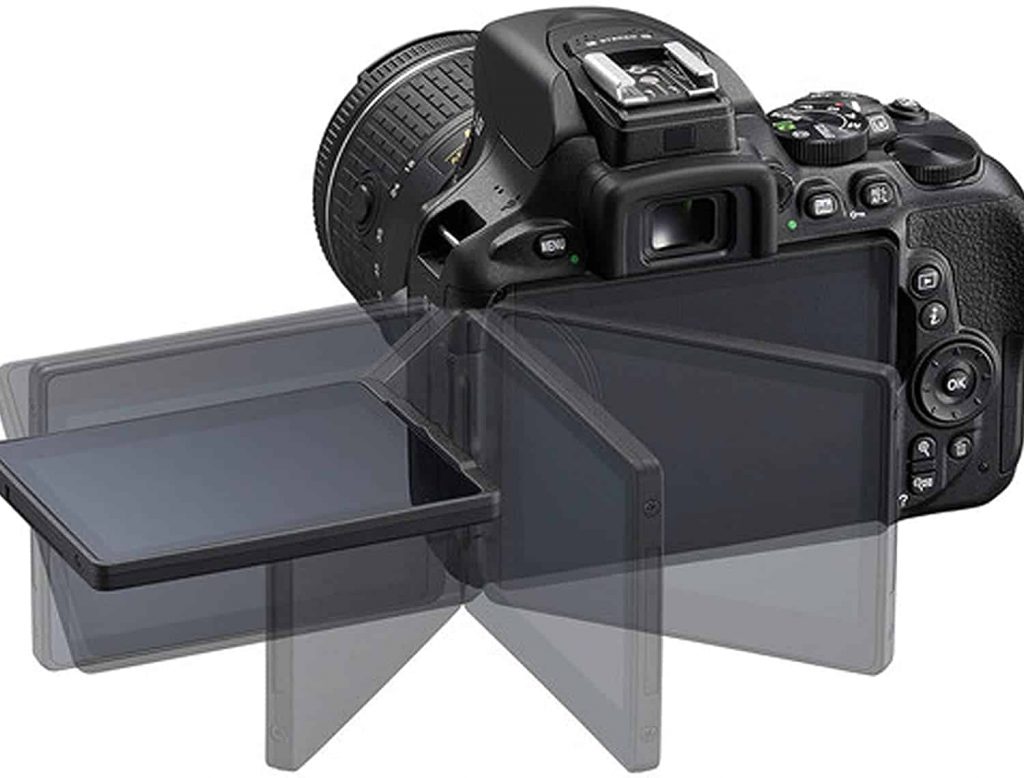
At this price, in this group, you’re choosing between the Canon EOS 800D and the Nikon D5600 – a tricky choice given the excellence of both cameras. Both take superb images, and although the Nikon is a bit cheaper, the Canon has a slightly faster continuous mode.
It also has a substantially more sophisticated autofocus system and an extra stop of available ISO. However, the Nikon shoots nearly 400 frames more on a single battery charge. Between them, ambitious novice photographers have a real head-scratcher on their hands.
More: Smart Bedroom Gadgets
Key specs
- 24.2 megapixel sensor
- 39-point, 9x cross-type autofocus
- Video modes: 720p at 59.94, 50fps; 1080p at 59.94, 50, 29.97, 25, 23.976fps
- Shutter speed range: 30s-1/4,000th
- Max continuous speed: 5fps
- ISO range: 100-25,600
- Memory card slot: SD, SDHC, SDXC
- Lens mount: Nikon F mount
- Display: 3.2in, 1,037k pixel vari-angle
- Connectivity: Hi-Speed USB, HDMI mini, 3.5mm stereo mini-jack for microphone, Wi-Fi, NFC, Bluetooth
- Battery life: 970 frames
- Dimensions: 124 x 70 x 97mm (WDH)
- Weight: 1 pounds without lens.
Buying guide for your next entry-level DSLRs
The growing appeal of the DSLR among both casual and serious photographers encourages the continuous release of new models that promise better performance than predecessors. Some brands try to offer everything for everyone with their latest releases. Others focus more on a particular market part by providing either entry-level cameras or only advanced options.
Whatever your target audience is, there are plenty of excellent cameras from which you can choose depending on what appeals to you most: ease-of-use, performance, full compatibility with your existing lenses and accessories, etc. The following guide should help you understand what each model has to offer to find exactly what you want without wasting too much time shopping.
How much will my photos improve compared to those taken by my phone?
It depends on your skill, but you’ll be amazed how far you can zoom in before things start getting ugly. A lot of people are amazed after their first shoot ever! Try it here, and join our course at Udemy for free.
How do I take a great photo?
Your photos will get better and better with time as you learn to use manual modes to your advantage (which is what most pros do). Start here if you want to become an expert or at least shoot like one. You can also try it for free here.
Is APS-C really that much smaller than Full-Frame?
It depends on how close you look at the sensor size! The image circle produced by your lenses will be identical on both types of cameras. However, all of its edges won’t be visible in an APS-C body unless you buy a very expensive lens. In other words, the APS-C sensor can only use the central portion of your lens’ image circle (see article for more details).
How do I keep my photos looking sharp?
There are two important factors to consider: the first is depth-of-field, and the second is resolution. Depth of field applies to both full-frame and 1.6x crop sensors; regardless of which camera you choose, if you read this guide, it will improve your ability to shoot great photos in low light with any camera! As for resolution, if you plan on cropping heavily or making large prints, choosing a high megapixel count camera is necessary as it helps avoid visible pixelation on the final image. The guide above will help you pick the right camera for your needs.
Why should I invest in a DSLR instead of just sticking to my phone?
Because it is fun! It’s really fun to see how far technology has come; shooting with a modern DSLR or mirrorless camera will feel like an entirely new experience compared to using your phones’ built-in camera, as you’ll be able to change so many settings and take photos that simply aren’t possible with your cell phone. Once you’ve mastered the basics (i.e., setting shutter speed ), there are tons of other things that can be done to create unique photos, such as long exposure, HDR, astrophotography, etc.
Can you take professional headshots with a DSLR?
Yes, you can take excellent portraits by shooting in portrait mode (or manually dialing in the exact aperture and focus distance). You’ll be amazed at what a little bit of practice will do! If you need corporate headshots Toronto, check out this corporate headshot service.
Will I be able to use my DSLR for video?
Yes, many cameras will shoot in full HD at 30 fps and some even 60 fps; but that said, they are not as good for recording video as dedicated camcorders or cameras (the in-body stabilization is not very good, which means you need to have a really stable hand). If video is important for you, getting a p&s with manual controls and interchangeable lenses (or mirrorless) will be your best bet.
Why should I buy a DSLR instead of a mirrorless?
Because you can’t take beautiful photos with a mirrorless camera the way you can with a DSLR. Put simply, for image quality and handling, I would only recommend using mirrorless cameras if you plan to use them for video or autofocus tracking/action photography; otherwise, just get a DSLR instead!
How much difference is there between entry-level cameras in terms of image quality?
In truth? Not much. All entry-level DSLRs have image sensors that are roughly the same size. That means they all enjoy approximately the same (superlative) image quality.
Once you start to push a camera’s sensor sensitivity upwards, you might see some cameras generate more noise. This usually happens when you try to get the correct exposure in low light, for example. In many cases, attempts to differentiate image quality in everyday use are exercises in hair-splitting.
How important is the monitor on the back of a DSLR?
Pretty important. On a real DSLR, you compose an image by looking through an optical viewfinder.
That means the screen on the back of the camera is only used to review a photo and check how your camera is set up before taking a shot.
That doesn’t mean it’s not essential.
A camera screen needs to be big, bright, and high enough in the resolution that you can see if an image is sharp or not without having to squint. More expensive cameras will also have vari-angle screens.
This allows you to tilt and/or rotate the camera screen. This is very useful if you need to shoot at extreme angles, such as over the crowd’s heads at a festival.
How does autofocus work?
Ah, good question. Suppose you mainly shoot portraits of people or reasonably well-lit landscapes. In that case, you don’t have a considerable need for incredible autofocus performance.
As you get more ambitious, you’ll be demanding more from your camera’s autofocus. An autofocus zone is an area of the frame a DSLR looks at to see if it can define an edge clearly. Still, cheap DSLRs tend to have fewer autofocus zones, which means they’ll be a little less snappy when it comes to focusing on your subject.
Expensive DSLRs have more cross-type autofocus zones. This is a more complex, more accurate type of autofocus sensor. This sensor generally gives sharper results in awkward-lit or complex scenes.
What should I look for in terms of video?
We haven’t seen a DSLR that doesn’t shoot a video for some time, so virtually everything you can buy will shoot video up to Full HD 1080p. Suppose you’ve got ambitions to shoot good quality video.
In that case, most DSLRs will do a fine job of it, but make sure your intended camera shoots at the frame rates you want. If you’re going to shoot a lot of action, you might find that a camera capable of shooting at more than 30 frames per second (fps) makes sense.
You should also lookout for a microphone jack to attach an external mic. Not all DSLRs have these, but they can make a massive difference to your final video’s quality.
How about connectivity?
We’re seeing an increasing number of cameras these days. Even at the budget end of the market with Wi-Fi built-in. This isn’t just for transmitting images to a computer.
It can also be connected to a smartphone or tablet so that you can control the camera’s functions remotely. Inserting your camera’s memory card into a card reader, or using its USB port, will almost always be faster. This opens up some fantastic possibilities when it comes to remote camera operation.
Last update on 2024-04-06 / Affiliate links / Images from Amazon Product Advertising API
Table of Contents





